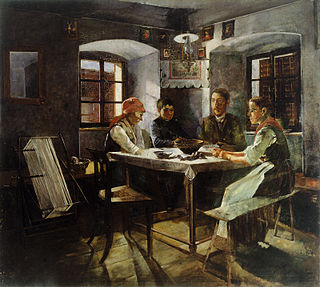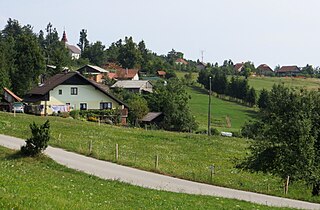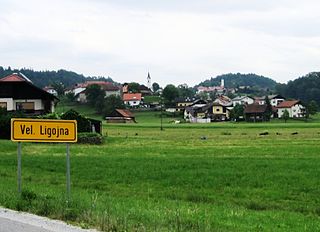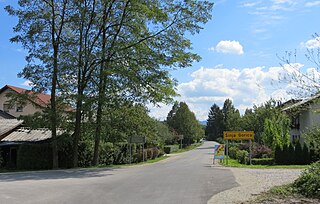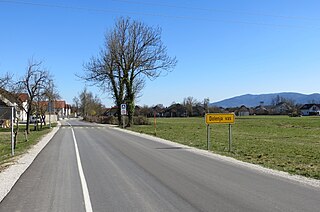| Verd | |
|---|---|
center of Verd | |
| Coordinates: 45°57′11.32″N14°18′0.16″E / 45.9531444°N 14.3000444°E Coordinates: 45°57′11.32″N14°18′0.16″E / 45.9531444°N 14.3000444°E | |
| Country | |
| Traditional region | Inner Carniola |
| Statistical region | Central Slovenia |
| Municipality | Vrhnika |
| Area | |
| • Total | 8.56 km2 (3.31 sq mi) |
| Elevation | 294.9 m (967.5 ft) |
| Population (2002) | |
| • Total | 1,834 |
| [1] | |
Verd (pronounced [ˈʋɛɾt] ; in older sources also Vrd, [2] German : Werd [2] ) is a settlement south of Vrhnika in the Inner Carniola region of Slovenia. The Verd Viaduct on the A1 motorway from Ljubljana to Koper runs above the settlement. [3]

German is a West Germanic language that is mainly spoken in Central Europe. It is the most widely spoken and official or co-official language in Germany, Austria, Switzerland, South Tyrol (Italy), the German-speaking Community of Belgium, and Liechtenstein. It is also one of the three official languages of Luxembourg and a co-official language in the Opole Voivodeship in Poland. The languages which are most similar to German are the other members of the West Germanic language branch: Afrikaans, Dutch, English, the Frisian languages, Low German/Low Saxon, Luxembourgish, and Yiddish. There are also strong similarities in vocabulary with Danish, Norwegian and Swedish, although those belong to the North Germanic group. German is the second most widely spoken Germanic language, after English.
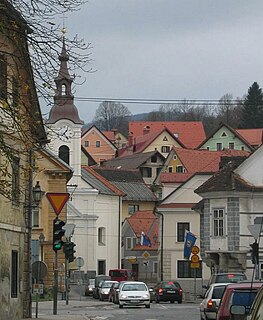
Vrhnika is a town in Slovenia. It is the seat of the Municipality of Vrhnika. It is located on the Ljubljanica River, 21 km from Ljubljana along the A1 motorway.

Inner Carniola is a traditional region of Slovenia, the southwestern part of the larger Carniola region. It comprises the Hrušica karst plateau up to Postojna Gate, bordering the Slovenian Littoral in the west. Its administrative and economic center of the region is Postojna, and other minor centers include Logatec, Cerknica, Pivka, and Ilirska Bistrica.





